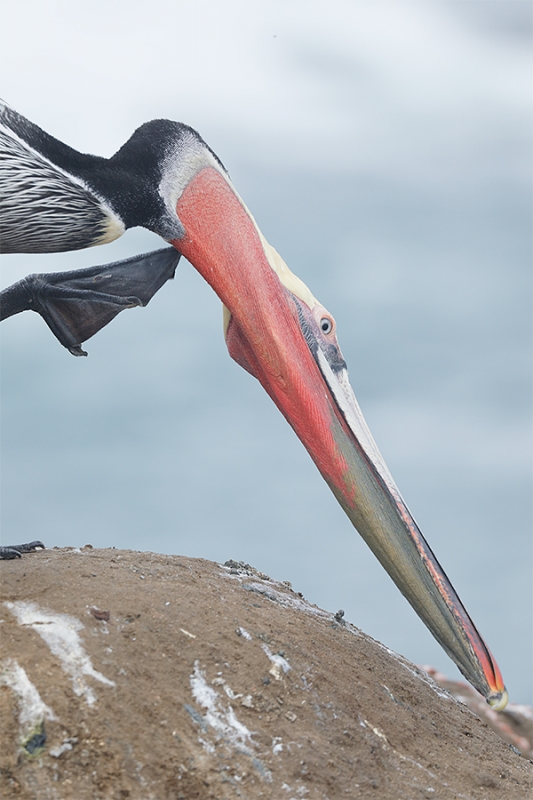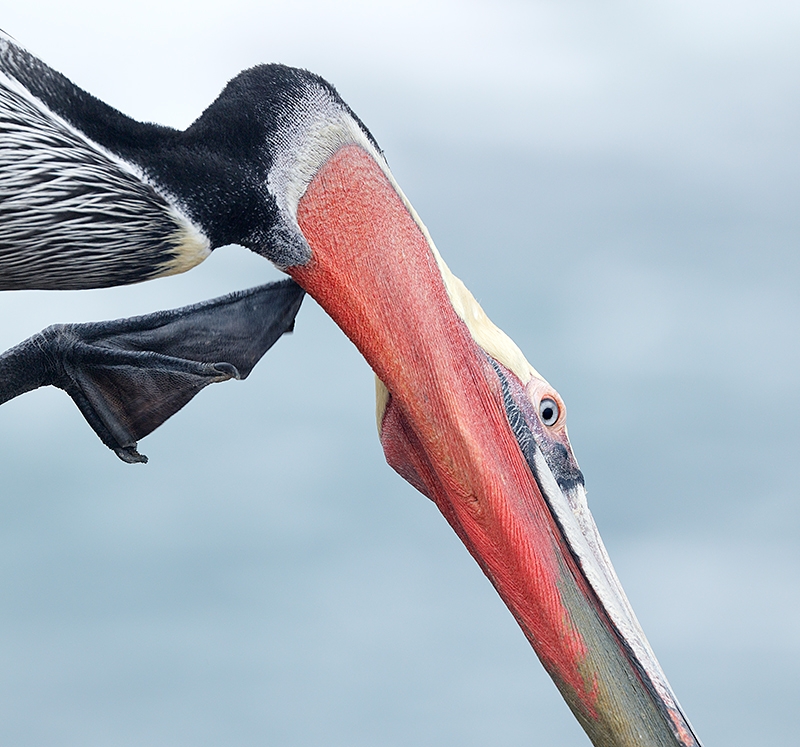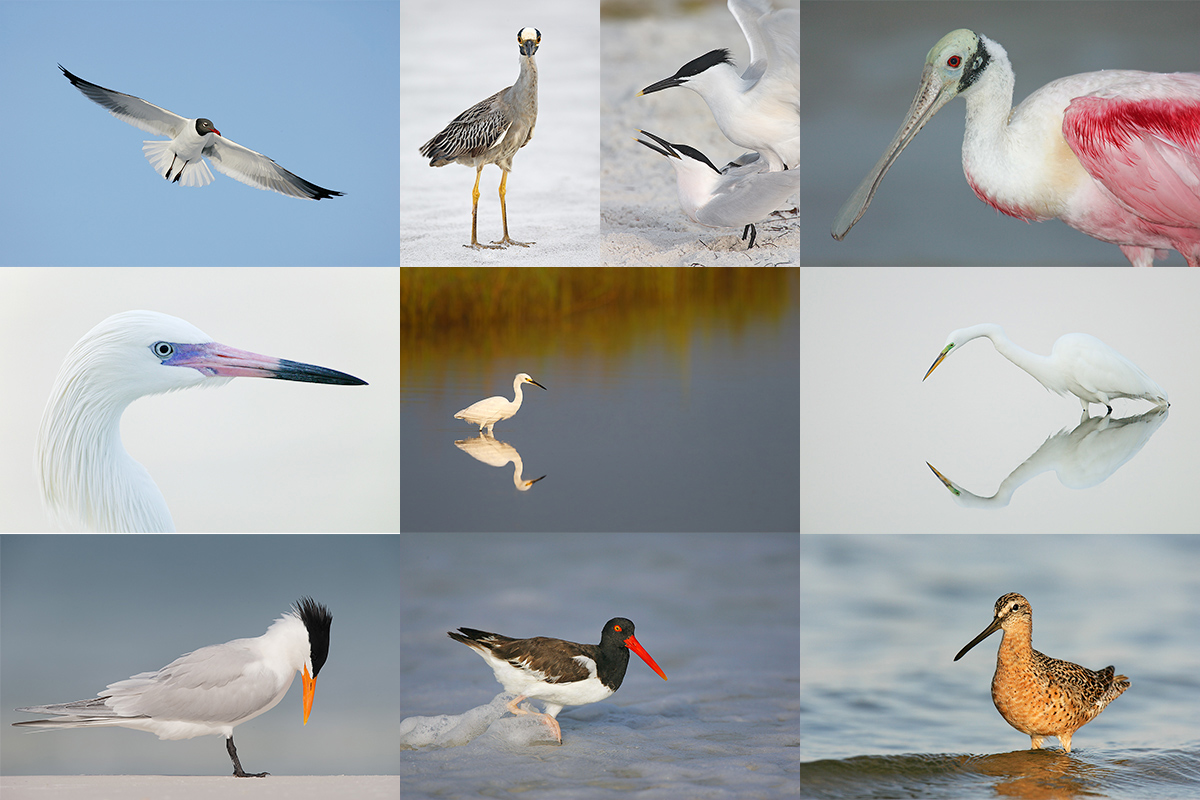What’s Up?
We finally had snow on the cranes on the last day of the Japan in Winter ITP, Thursday 23 FEB. Mr. Always Edits Tightly had 214 keeps after the first edit from the morning session only. That was followed up by a great afternoon session. The group flies home tomorrow. I am staying till the 28th.
I prepared this post way back on 23 JAN when I flew to Long Island. My flight to Islip arrived one hour forty minutes late due to weather delays earlier in the day. With a big noreaster hitting Long Island, the last few minutes were a bit rocky. Once we touched down most of the folks on the plane erupted in cheers. Younger daughter Alissa picked me up in fine fashion. I spent most of the next day with my Mom. She does not look a day over 93 3/4. She was 94 in September.
Gear Questions and Advice
Too many folks attending BAA IPTs and dozens of folks whom I see in the field, and on BPN, are–out of ignorance–using the wrong gear, especially when it comes to tripods and more especially, tripod heads… Please know that I am always glad to answer your gear questions via e-mail.
The Streak: 468!
Today’s blog post marks a totally insane, irrational, illogical, preposterous, absurd, completely ridiculous, unfathomable, silly, incomprehensible, what’s wrong with this guy?, makes-no-sense, 468 days in a row with a new educational blog post. As always–and folks have been doing a really great for a long time now–please remember to use our B&H links for your major gear purchases. For best results use one of our many product-specific links; after clicking on one of those you can continue shopping with all subsequent purchases invisibly tracked to BAA. Your doing so is always greatly appreciated. Please remember: web orders only. And please remember also that if you are shopping for items that we carry in the BAA Online Store (as noted in red at the close of this post below) we would of course appreciate your business.
|
|
|
This image was created at La Jolla, CA with the Canon EF 100-400mm f/4.5-5.6L IS II USM lens, the Canon Extender EF 1.4X III (at 520mm) with my very favorite bird photography camera body, the Canon EOS 5D Mark IV. ISO 800. Evaluative metering +2/3 stop: 1/400 sec. at f/9 in Manual mode. Daylight WB. LensAlign/FocusTune micro-adjustment: +4. Middle Large Zone AF/AI Servo/Shutter button AF activated four AF points that fell nicely on the bird’s bill just below and just reaching the bird’s eye. Pacific race Brown Pelican scratching |
The Creative Mind: What Would You Do With This Image?
This image puzzled me for about one second. Right off the bat I loved the great look at the bill pouch from below. And the scratching foot was pretty neat as well. The dirt perch was butt ugly and the end of the bill just merged with the dirt. Before you scroll down, think about how you would crop and process it. Or would you delete it?
The Pelican Rig
Without a doubt, the hand held 100-400 II with the 1.4X III TC and a 5D Mark IV is the world’s best rig for photographing Brown Pelicans on the cliffs of La Jolla. It offers ease of handling, tremendous versatility, a great IS system, and amazing close focus. It is lightweight. And for flight photography simply remove the 1.4X. I used this great rig about 80% of the time for my pelican photography in San Diego. And for lots more as well.
Its ease of handling allows me to get around on the cliffs without having to deal with a tripod. The mounds and little hills at the primary pelican location make setting up a tripod a challenge. And it is obviously easier to get very close hand holding than it is with a cumbersome tripod. In addition, quickly getting the proper elevation — higher or lower as need be — is easier as well. All of these factors make it the perfect rig for trying to capture the great variety of pelican behaviors that you will see every day. And those include the notoriously difficult to anticipate and photograph head throws.
|
|
My Crop and Optimization of Today’s Featured Image |
My Solution
As I loved the great look at the underside of the bill pouch and the scratching foot but did not like the dirty dir perch or the toes of the other foot, a near square crop seemed obvious to me. After converting the image in DPP 4 I brought the image into Photoshop CC I executed my crop and followed my usual workflow: Digital Eye Doctor and Selective Color work first followed by the NIK 25/25 recipe and NeatImage noise reduction. Piece of cake and I love the optimized image.
The key here was realizing what I liked about the original and cropping to include what I liked while eliminating the weaker part of the image.
Everything above (but for Neat Image noise reduction) plus tons more is detailed in the Digital Basics File, an instructional PDF that is sent via e-mail. It includes my complete (former PC) digital workflow, dozens of great Photoshop tips, details on using all of my image clean-up tools, the use of Contrast Masks, several different ways of expanding and filling in canvas, all of my time-saving Keyboard Shortcuts, the basics of Quick Masking, Layer Masking, and NIK Color Efex Pro, Digital Eye Doctor techniques, using Gaussian Blurs, Dodge and Burn, a variety of ways to make selections, how to create time-saving actions, and tons more.
Learn advanced Quick Masking and advanced Layer Masking techniques in APTATS I & II. You can save $15 by purchasing the pair. You can learn to apply Neat Image noise reduction in The Professional Photographers Guide to Post Processing. Learn advanced NeatImage noise reduction in the The Professional Post Processing Guide (by Arash Hazeghi and yours truly).
I am working on an all-new Current Workflow e-guide that better reflects my Macbook Pro/Photo Mechanic/DPP 4/Photoshop workflow. It will include a section on ACR conversions and a simplified method of applying Neat Image noise reduction.
|
DeSoto in spring is rife with tame and attractive birds. From upper left clockwise to center: breeding plumage Dunlin, dark morph breeding plumage Reddish Egret displaying, breeding plumage Laughing Gull/front end vertical portrait, breeding plumage Laughing Gull with prey item, Laughing Gull on head of Brown Pelican, screaming Royal Tern in breeding plumage, Royal Terns/pre-copulatory stand, Laughing Gulls copulating, breeding plumage Laughing Gull/tight horizontal portrait, Sandwich Tern with fish, and a really rare one, White-rumped Sandpiper in breeding plumage, photographed at DeSoto in early May. |
Fort DeSoto Spring IPT/April 19-22, 2017. (meet & greet at 2pm on Wednesday April 19 followed by an afternoon session) through the full day on Saturday April 22. 3 1/2 DAYs: $1599. Limit 10. To save your spot, please call and put down a non-refundable deposit of $499.00.
I will be offering small group (Limit 3) Photoshop sessions on Sunday afternoon and Monday morning if necessary. Details on that TBA.
Fort DeSoto is one of the rare locations that might offer great bird photography 365 days a year. It shines in spring. There will Lots of tame birds including breeding plumage Laughing Gull and Royal and Sandwich Terns. With luck, we will get to photograph all of these species courting and copulating. There will be American Oystercatcher and Marbled Godwit plus sandpipers and plovers, some in full breeding plumage. Black-bellied Plover and Red Knot in stunning breeding plumage are possible. There will be lots of wading birds including Great and Snowy Egrets, both color morphs of Reddish Egret, Great Blue, Tricolored and Little Blue Heron, Yellow-crowned Night-Heron, and killer breeding plumage White Ibis. Roseate Spoonbill and Wood Stork are possible and likely. We should have lots of good flight photography with the gulls and terns and with Brown Pelican. Nesting Least Tern and nesting Wilson’s Plover are possible.
We will, weather permitting, enjoy 7 shooting sessions. As above, our first afternoon session will follow the meet and greet at 2pm on Wednesday April 19. For the next three days we will have two daily photo sessions. We will be on the beach early and usually be at lunch (included) by 11am. We will have three indoor sessions. At one we will review my images–folks learn a ton watching me choose my keepers and deletes–why keep this one and delete that one? The second will be a review of your images so that I can quickly learn where you need help. For those who bring their laptops to lunch I’d be glad to take a peek at an image or three. Day three will be a Photoshop session during which we will review my complete workflow and process an image or two in Photoshop after converting them in DPP. Afternoon sessions will generally run from 4:30pm till sunset. We photograph until sunset on the last day, Saturday, April 22. Please note that this is a get-your-feet and get-your-butt wet and sandy IPT. And that you can actually do the whole IPT with a 300 f/2.8L IS, a 400 f/4 ID DO lens with both TCs, or the equivalent Nikon gear. I will surely be using my 500 II as my big glass and have my 100-400 II on my shoulder.
|
DeSoto in spring is rife with tame and attractive birds. From upper left clockwise to center: Laughing Gull in flight, adult Yellow-crowned Night-Heron, copulating Sandwich Terns, Roseate Spoonbill, Great Egret with reflection, Short-billed Dowitcher in breeding plumage, American Oystercatcher, breeding plumage Royal Tern, white morph Reddish Egret, and Snowy Egret marsh habitat shot. |
What You Will Learn
You will learn to approach free and wild birds without disturbing them, to understand and predict bird behavior, to identify many species of shorebirds, to spot the good situations, to understand the effects of sky and wind conditions on bird photography, to choose the best perspective, to see and understand the light, to get the right exposure every time after making a single test exposure, and to design pleasing images by mastering your camera’s AF system. And you will learn how and why to work in Manual mode (even if you are scared of it).
The group will be staying at the Red Roof Inn, St. Petersburg: 4999 34th St. North, St Petersburg, FL 33714. The place is clean and quite inexpensive. Please e-mail for room block information. And please call Jim or Jennifer at 863-692-0906 to register. All will need to purchase an Annual Pass early on Tuesday afternoon so that we can enter the park at 6am and be in position for sunrise opportunities. The cost is $75, Seniors $55. Tight carpools will be needed and will reduce the per person Annual Pass costs. The cost of three lunches is included. Breakfasts are grab what you can on the go, and dinners are also on your own due to the fact that we will usually be getting back to the hotel at about 9pm. Non-photographer spouses, friends, or companions are welcome for $100/day, $350 for the whole IPT.
BIRDS AS ART Fort DeSoto In-the-Field Meet-up Workshop (ITFW): $99
Fort DeSoto Spring In-the-Field Cheap Meet-up Workshop (ITFW) on the morning of Sunday, April 23, 2017: $99
Join me on the morning of Sunday April 23, 2017 for 3-hours of photographic instruction at Fort DeSoto Park. Beginners are welcome. Lenses of 300mm or longer are recommended but even those with 70-200s should get to make some nice images. Teleconverters are always a plus.
You will learn the basics of digital exposure and image design, autofocus basics, and how to get close to free and wild birds. We should get to photograph a variety of wading birds, shorebirds, terns, and gulls. This inexpensive morning workshop is designed to give folks a taste of the level and the quality of instruction that is provided on BIRDS AS ART Instructional Photo-tours. I hope to meet you there.
To register please call Jim or Jennifer during weekday business hours with a credit card in hand to pay the nominal registration fee. Your registration fee is non-refundable. You will receive a short e-mail with instructions, gear advice, and meeting place one week before the event.


Please Remember to use my Affiliate Links and to Visit the New BAA Online Store 🙂
To show your appreciation for my continuing efforts here, we ask, as always, that you get in the habit of using my B&H affiliate links on the right side of the blog for all of your photo and electronics purchases. Please check the availability of all photographic accessories in the New BIRDS AS ART Online Store, especially the Mongoose M3.6 tripod head, Wimberley lens plates, Delkin flash cards and accessories, and LensCoat stuff.
As always, we sell only what I have used, have tested, and can depend on. We will not sell you junk. We know what you need to make creating great images easy and fun. And please remember that I am always glad to answer your gear questions via e-mail.
I would of course appreciate your using our B&H affiliate links for all of your major gear, video, and electronic purchases. For the photographic stuff mentioned in the paragraph above, and for everything else in the new store, we, meaning BAA, would of course greatly appreciate your business. Here is a huge thank you to the many who have been using our links on a regular basis and those who will be visiting the New BIRDS AS ART Online Store as well.
Be sure to like and follow BAA on Facebook by clicking on the logo link upper right. Tanks a stack.
Typos
In all blog posts and Bulletins, feel free to e-mail or to leave a comment regarding any typos or errors. Just be right :).


















I agree with Pat Fishburne. I would have done what you did. Great image.
Great choice!
How can I change my email address with you.
Unsubscribe at the old address and the subscribe with the new address. Both via the drop-down menu on the Subscriptions tab on the orange/yellow tool bar above.
a
Love this image Artie! Great crop, no, perfect crop.
Wow, I feel like I won the gold ring! I would have done the exact same crop as you did.
Hi! I’d add canvass in the bottom right corner and try “Content Aware Fill” to get the rock to go right into the corner. I’d then remove what is behind the tip of the bill. Extra room bottom right and a clean tip to the bill would make this worth seeing I reckon.
Do-able but that rock is a big time mess 🙂
a